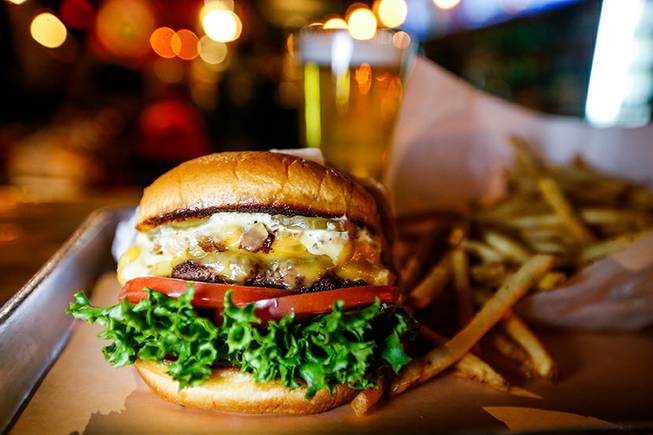
Courtesy
Thursday, Oct. 18, 2018 | noon
The perception of food and beverage pairings were once limited to wine—a full-bodied red wine with meat and a crisp white wine with seafood. However, the popularity of craft beers has given rise to a more versatile pairing opportunity: food and beer.
“Beer is a great complement to any meal, partially because it’s more diverse than wine. Where wine has one ingredient, beer can have a wide variety of ingredients that affect the flavor, texture or finish of the beer, and all of those things can help elevate food in different ways,” said Mike Amidei, General Manager at bBd’s Las Vegas at Palace Station.
Regardless of whether or not you identify as a “beer person,” taking the time to explore an extended beer menu can lead to a world of discovery and a new favorite dinner companion.
Creating food and beer pairings
Because there are so many beers and pairing opportunities, the sky is the limit when it comes to finding flavorful combinations. “The relationship between great food and great beer is everything,” said Ralph Perrazzo, bBd’s chef and owner. “My food is developed from beer, actually. Usually it’s the other way around—chefs find the right beverage for the food. But I actually drink the beer first and then create the savory counterpart.”
Perrazzo notes that he draws particular inspiration from sours and barrel-aged beer, and affirms his love for Pilsners. “Those beers are great to cut fat and acid in dishes. I think it’s why they’re my favorites.”
Amidei categorizes pairings into two groups: complementary pairings that include a beer with similar flavor notes to the dish, and contrasting pairings, which involve choosing a beer with dissimilar flavors to create something new.
“Just like wine, when the pairing is done correctly, the beer and the food play well together and either one of those things changes the flavor of both. Each sip should reset your palate before the next bite,” Amidei said. He recommends saisons as a good general beer that pairs well with many meal types.
Beer for wine drinkers
For wine lovers, Perrazzo recommends trying a barrel-aged beer. “Whether it’s a chardonnay barrel or a cabernet barrel, or even a sake barrel, the beer takes on notes like wine,” Perrazzo said “And sometimes it’s even smoother and more complex than wine. I’ve had really knowledgeable wine drinkers come in and they’re shocked when they discover what beer can be.”
Are there any beers you should avoid with food?
It’s a matter of personal preference, but some beers might be too heavy or overwhelming with food. For instance, a high-ABV, double IPA may not be the ideal pairing for a meal.
The importance of quality
Regardless of the beer style, high-quality, mindfully crafted beer can optimize the experience for anyone. The water used during brewing, the caliber of ingredients and the brewing process are all important to the finished product.
“It’s kind of like a tomato,” Perrazzo said. “Compare an heirloom tomato from a hand-tended farm to a shiny, perfect tomato you buy at the supermarket. They’re both tomatoes, but one is just juicy. It’s better. I think that’s the difference between a great quality beer and a beer that’s the same style but not the same quality.”
If you’re looking to branch out from your typical bar order but aren’t feeling overly experimental, consider asking for a brew that’s similar to your favorite Hefeweizen or light lager but made by a small craft brewer. The result may surprise you.
Serving a high-quality beer in a less-than-optimal way can affect the flavor as well. Different beers require specific temperatures to draw out their flavors. For instance, stouts are typically served a bit warmer than light beers because the rich flavors in a stout can be dulled by very cold temperatures. The pour is also important, as is using the correct type of glass for the specific beer.
When in doubt, Amidei says that white wine glasses are good for most beers. Maintaining clean tap lines and using CO2 carbonated lines can also make a difference in the taste and overall experience when drinking draft beer. “People always say that draft beer gives them a headache or a hangover. Unfortunately, that often comes from dirty tap lines or an unbalanced carbonation system,” Perrazzo said.
